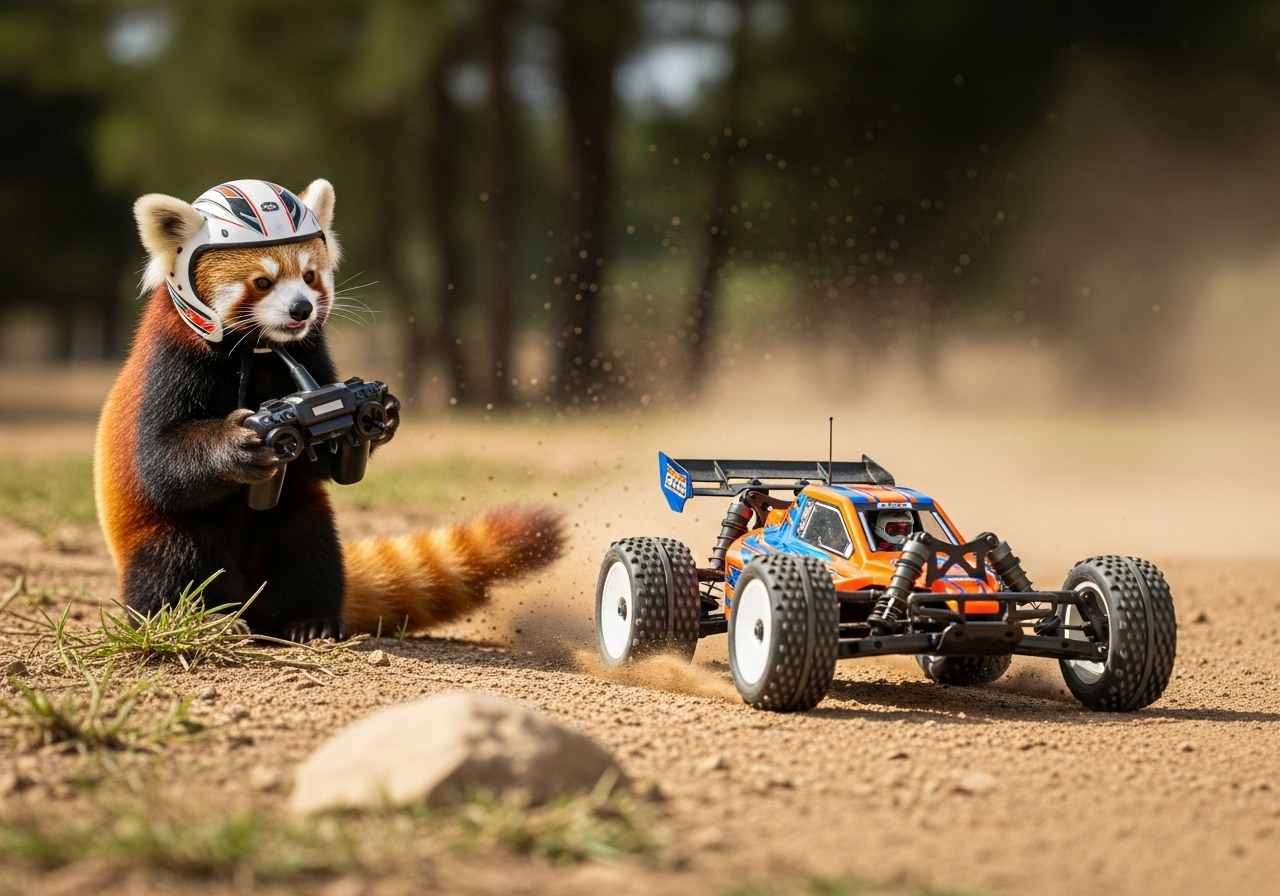Hello everyone!
When I was in elementary school, my world revolved around radio-controlled cars. The second car in my RC life, the one that truly captured my imagination, was the legendary Tamiya Hornet.
Technically, it wasn’t even mine. It was my father’s cherished machine, and I was just the lucky kid who got to borrow it. Today, I want to share my memories and a deep dive into this iconic buggy.
What is the Tamiya Hornet?
The Tamiya Hornet is a 2WD electric off-road buggy first released in October 1984. It became one of Tamiya’s most popular models, helping to spark a worldwide 2WD RC buggy boom.
With its straightforward design and ease of assembly, it served as the perfect gateway for a generation of young hobbyists, including my father.
Specifications
Here are the basic specifications of the classic Hornet.
| Length | 400mm |
| Width | 230mm |
| Height | 150mm |
| Weight | 874g |
| Motor | Type 540 |
| Drivetrain | 2WD |
Its lightweight chassis combined with the powerful 540 motor was the secret to its nimble and exciting performance.
Key Features of the Hornet
The Hornet’s appeal lies in its brilliant simplicity and effective design.
- Easy Assembly: The durable yet lightweight ABS resin bathtub frame provided a solid and forgiving foundation for beginners.
- Unique Suspension: The rear featured oil-filled dampers with a unique “rolling rigid axle” system, giving the Hornet impressive performance on rough terrain.
- Iconic Spike Tires: Who can forget those iconic rear spike tires, perfect for digging into the dirt and providing excellent traction.
The Hornet’s Place in Tamiya’s History
In Tamiya’s lineup, the Hornet was positioned as a step-up from the more basic “Grasshopper” buggy. The standard Type 540 motor and oil-filled rear dampers made it a significantly higher-performance machine. It was a dream car for many young racers, offering a perfect balance of performance, durability, and affordability.
A Special Feature in Japan: The “RC Boy” Connection
In Japan, the Hornet’s popularity was amplified by a unique cultural phenomenon. It was prominently featured in the manga series “Rajikon Bōi” (ラジコンボーイ, or “RC Boy”), which was serialized in the popular kids’ magazine CoroCoro Comic.
This exposure turned the Hornet from a popular hobby item into a cultural icon for Japanese children in the 1980s. The hero’s car was often based on the Hornet chassis, making it the undisputed star of the off-road RC world for a generation.
The Legend Lives On: Re-Release and the Hornet EVO
The fantastic news is that the Hornet’s story is far from over. In 2004, Tamiya re-released the classic Hornet, allowing fans old and new to experience the magic.
Furthermore, to celebrate its 40th anniversary, Tamiya released an upgraded version in 2024: the Hornet EVO. This modern iteration features significant upgrades, most notably a 4-wheel double wishbone suspension system, bringing its performance up to modern standards while retaining its classic look.
Conclusion
The Tamiya Hornet is more than just an RC car to me; it’s a time machine. It brings back vivid memories of sunny afternoons, the smell of dirt, and the joy of sharing a hobby with my father.
Its simple, robust design and thrilling performance taught me the fundamentals of RC and sparked a lifelong passion. The Hornet is a true legend in the hobby, and with the re-release and the new EVO version, its legacy is set to continue for years to come.


Comments